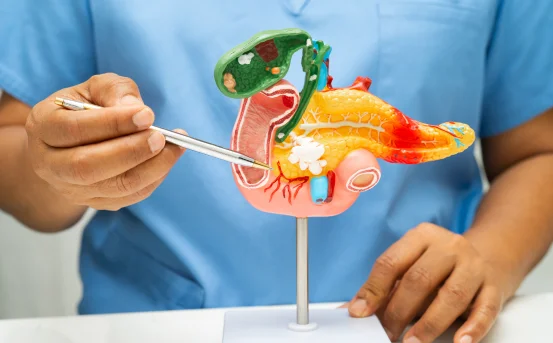Hepatitis E is a viral liver infection caused by the hepatitis E virus (HEV), a condition that is increasingly becoming a global health concern, especially in regions with poor sanitation and contaminated water supplies. While often self-limiting, hepatitis E can sometimes cause severe complications, particularly in pregnant women, individuals with pre-existing liver disease, or those with compromised immune systems.
In many cases, hepatitis E remains asymptomatic or mild, but it can also lead to acute liver inflammation, resulting in serious health complications if left undiagnosed. Recognizing the early and advanced symptoms of hepatitis E is crucial for prompt diagnosis, timely treatment, and preventing further spread of the virus both for your health and for public safety.
What is Hepatitis E?
Before diving into the symptoms, it’s important to understand what hepatitis E is. Hepatitis E is a liver disease caused by infection with the hepatitis E virus, which is primarily transmitted through the fecal oral route typically from consuming contaminated water or food. The virus is most prevalent in developing countries in Asia, Africa, and Central America, but sporadic outbreaks have also been reported in developed nations due to poor food hygiene and zoonotic transmission from animals.
Hepatitis E usually causes an acute (short-term) infection. In most healthy individuals, the virus clears on its own within 4 to 6 weeks. However, in certain populations, the infection can lead to fulminant hepatitis (a sudden and severe form of liver failure) or become chronic, particularly in immunocompromised individuals.
Early Symptoms of Hepatitis E
The incubation period for hepatitis E the time between exposure and the onset of symptoms ranges from 2 to 10 weeks, with most cases presenting symptoms around 5 to 6 weeks after exposure. The early symptoms can be nonspecific and may resemble other viral infections, making it difficult to identify the condition in its initial stages.
One of the first signs of hepatitis E is mild fever, often accompanied by a general feeling of malaise or discomfort. Patients may also experience loss of appetite and fatigue, which are common with many viral illnesses. In some cases, nausea and vomiting may follow, along with abdominal discomfort, particularly in the upper right side of the abdomen where the liver is located.
Progression to More Specific Symptoms
As the disease progresses, more specific symptoms related to liver dysfunction start to appear. A classic symptom of hepatitis E is jaundice, a yellowing of the skin and eyes that indicates an increase in bilirubin levels due to liver inflammation. Jaundice usually appears a few days after the initial flu-like symptoms and marks the peak of liver involvement.
In addition to jaundice, patients may notice dark-colored urine and pale or clay-colored stools, which are also signs of impaired liver function. Some individuals may also experience itchiness of the skin due to bile salt accumulation.
Common Symptoms of Hepatitis E
Here’s a summary of the commonly reported symptoms, although it is important to remember that not every patient will experience all of them :-
-
Mild fever
-
Fatigue
-
Loss of appetite
-
Nausea and vomiting
-
Abdominal pain (especially in the liver area)
-
Jaundice (yellowing of the skin and eyes)
-
Dark urine
-
Pale stools
-
Itchy skin
-
Muscle and joint aches
These symptoms typically last for one to two weeks, though in some individuals, they may persist longer.
Hepatitis E in Pregnant Women
Hepatitis E poses a particularly high risk for pregnant women, especially during the third trimester. In these cases, the virus can cause a more severe form of liver inflammation that may lead to fulminant hepatitis, liver failure, or even death. Additionally, the infection can result in premature delivery, miscarriage, or stillbirth. Symptoms in pregnant women may appear more suddenly and progress more aggressively, with intense jaundice, excessive fatigue, and abdominal swelling.
Hepatitis E in Immunocompromised Individuals
Individuals with weakened immune systems such as transplant recipients, HIV patients, or those undergoing chemotherapy may develop chronic hepatitis E, especially if infected with genotype 3 of the virus. In these cases, symptoms might be milder and prolonged, making it difficult to diagnose. Chronic hepatitis E can cause progressive liver damage, leading to cirrhosis over time.
When to Seek Medical Help?
If you or a loved one experiences symptoms such as persistent jaundice, severe fatigue, abdominal pain, or dark urine, it is crucial to seek medical attention. Early diagnosis and supportive treatment can prevent complications. A simple blood test can confirm the presence of hepatitis E virus by detecting specific antibodies (anti-HEV IgM and IgG) or HEV RNA.
Although there is no specific antiviral treatment for hepatitis E, most patients recover with rest, hydration, and supportive care. It’s important to avoid alcohol and liver-damaging medications during recovery.
Preventive Measures to Avoid Infection
While this blog focuses on symptoms, it’s worth noting that prevention is the best approach to dealing with hepatitis E. Since the virus is commonly spread through contaminated water, ensuring access to clean drinking water, maintaining proper sanitation, and practicing good hand hygiene are critical preventive steps. In some countries, especially in Asia, a vaccine for hepatitis E is available, but it is not yet widely accessible globally.
Conclusion
Hepatitis E is a potentially serious liver infection that often begins with mild, flu like symptoms but can progress to more severe manifestations like jaundice and liver dysfunction. Recognizing the symptoms early especially in vulnerable populations like pregnant women and immunocompromised individuals is key to preventing complications.























